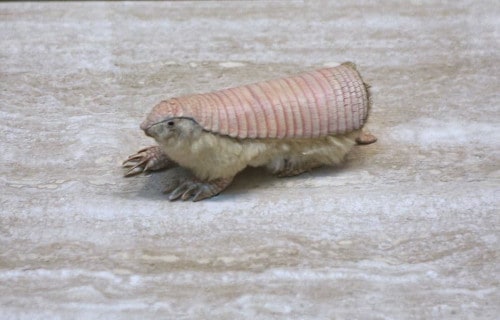
CCL: http://bit.ly/2xQPH8p
We sincerely hope that you enjoy this article about 7 Lesser-Known South American Mammals. Obviously, these represent only a portion of the vast array of mammal species native to the region. Many of these those of us not native to the region remain unaware of. But we hope these few whet your appetite to know more. So please, read on and discover a few of the remarkable species this region of the world has to offer.
Culpeo
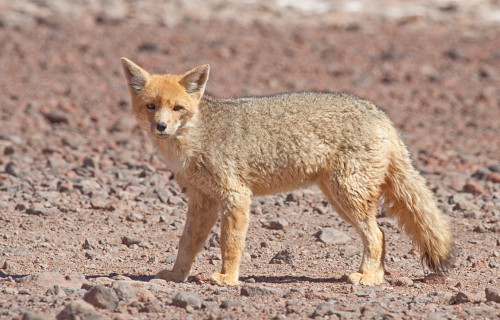
CCL: https://bit.ly/34Y8KwS
Culpeo Facts
- The first of our selections for inclusion in this article on 7 Lesser-Known South American Mammals is the fabulous Culpeo.
- First of all, the short term serves as the common name for the remarkable, yet hard to pronounce, Lycalopex culpaeus. This fascinating type of canid also goes by several other names, however. These other names, including the Andean zorro, the Andean Fox, and the zorro culpeo, all remain easier to pronounce than the scientific term.
- Furthermore, the animal also ranks as the second largest canid on the continent it evolved as native to. It also holds an unusual place in the history of its region. That’s because, in the past, humans bred captive individuals of the species into a domesticated breed. Known as the Fuegian dog, this became extinct around the end of the 19th century.
- Interactions with humans remains rare, but the Culpeo does occasionally feed on sheep. For this reason, some people consider it as a pest. Therefore, humans sometimes hunt or poison individuals. However, overall it remains considered as a beneficial species. Fortunately, its population appears to be stable. For that reason, the IUCN lists it as Least Concern.
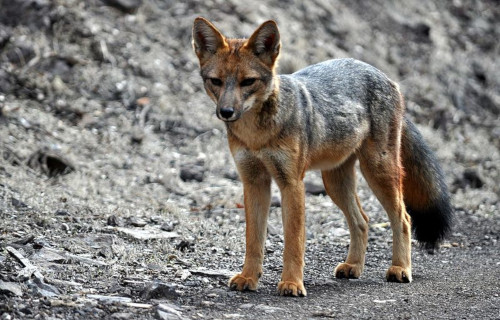
CCL: https://bit.ly/2Yu9J5r
Culpeo Physical Description
Most notably, in terms of sheer physical size, the beautiful Culpeo ranks as a rather moderate-sized variety of canid. That holds true due to the fact that its measurements place it roughly in between a red fox and a coyote.
In addition, it also displays a mild degree of sexual dimorphism. In its case, females attain a slight smaller size than males. The larger males average 25 lb (11.4 kg) in weight. The females, however, average about 19 lb (8.4 kg).
In terms of overall length, the species as a whole varies dramatically. But, adults range in total length from 37 – 52 in (95 – 132 cm). In terms of color, it generally presents a rather mottle appearance. Its upper back appears dark, but the shoulders and neck remain a tawny yellow. Its tail has a busy texture, and a black tip.
- Kingdom: Animalia
- Phylum: Chordata
- Class: Mammalia
- Order: Carnivora
- Family: Canidae
- Genus: Lycalopex
- Species: L. culpaeus
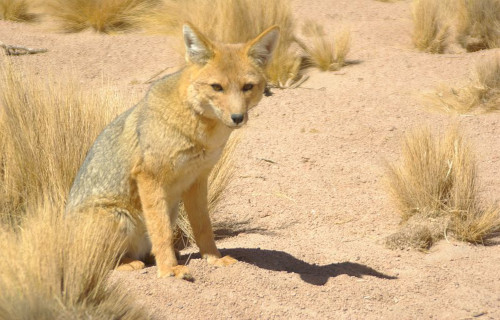
CCL: https://bit.ly/2RA6tnJ
Culpeo Distribution, Habitat, and Ecology
Firstly, the fascinating Culpeo inhabits a rather specific region of the continent of South America. Its primary range extends from Peru and Ecuador, to parts of Patagonia and Tierra del Fuego. But, some small scattered populations also occur in the southern regions of Colombia.
Furthermore, the remarkable animal also displays a high degree of adaptability to different habitats. These include regions of deserts and temperate rainforests. However, the majority of its numbers inhabit the western slopes of the Andes. There, it lives in deciduous forests and open areas.
The cunning Culpeo evolved as an opportunistic hunter. Therefore, it feeds on a wide variety of prey. This mainly consists of rabbits, hares, and various rodents. However, it also feeds on carrion when it encounters it. Young guanacos and even domestic livestock serve as prey as well, on occasion. It also eats eggs and plants on occasion.
While it generally lives a solitary life, it forms temporary families during the breeding season. But, researchers still have little precise information concerning its mating habits. Further, depending on where it lives, it maybe either diurnal, nocturnal, or crepuscular. Individuals communicate via a mix of scents, postures, and various sounds.
Geoffroy’s Cat

CCL: https://bit.ly/2qv0xkG
Geoffroy’s Cat Facts
- Our second choice for inclusion in this compendium of 7 Lesser-Known South American Mammals is the remarkable Geoffroy’s Cat.
- First of all, one important fact must be pointed out about the remarkable Geoffroy’s Cat. Despite the size and appearance of this particular feline, it remains a wild cat, and not a domesticated species.
- Yet another fact sets it apart from many other species of wild feline. That’s the fact that, quite fortunately, the IUCN presently lists it as a Species of Least Concern, on its Red List of Threatened Species.
- This pleasant surprise, in an age when many related species find themselves imperiled, occurs due to a combination of factors. These consist of its comparatively broad range of habitation, and, for the moment, at least, relatively large population base.
- Also, the various local governments in its native range declared the small mammal a protected species in the 1980’s. Previously, it had been extensively hunted as part of the international trade in fur.
- However, it does still face the same potential threats that many other species do at this time. Quite understandably, those consist primarily of the ever-increasing threats of climate change and habitat loss.
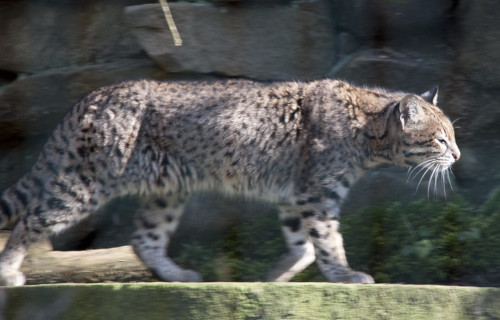
CCL: https://bit.ly/37lxJvO
Geoffroy’s Cat Physical Description
Most notably, the wonderful wild feline known as the Geoffroy’s Cat remains one of the smallest of all wildcats. In addition, the animal does display a moderate degree of sexual dimorphism, like many related creatures.
In its case, though sizes vary between individuals, as a general principle, males attain a slightly larger size than females. However, an average head and body length measures about 24 in (60 cm). The tail usually measures around 12 in (31 cm) in length.
Meanwhile, weights often vary rather significantly among different individuals. But, this typically remains between 44. – 11 lbs (2 – 5 kg). Yet, some exceptional individuals attain a weight of as much as 17 lb (7.8 kg).
In appearance, it generally displays a specific pattern, including a background color ranging from grayish to brownish-yellow. Also, the stomach show a cream color, or even white. But, the limbs, tail, head, cheeks, and neck display many dark bands and spots. Finally, even pure black individuals sometimes occur.
- Kingdom: Animalia
- Phylum: Chordata
- Class: Mammalia
- Order: Carnivora
- Family: Felidae
- Genus: Leopardus
- Species: L. geoffroyi
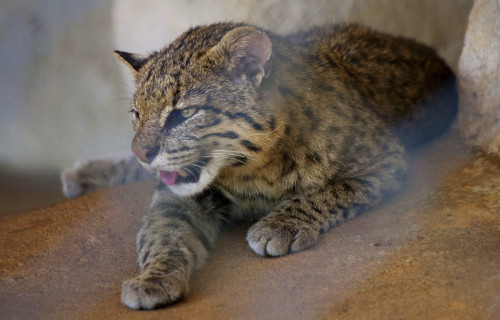
CCL: https://bit.ly/2XqXs1n
Geoffroy’s cat Distribution, Habitat, and Ecology
Firstly, the relatively extensive range of the wonderful Geoffroy’s Cat includes specific portions of South America. More specifically, this range includes parts of the countries of Bolivia, Chile, Argentina, Brazil, Uruguay, and Paraguay.
The fabulous feline also displays great adaptability in its habitat selection. That’s because it inhabits different types of habitat in different areas. In one portion of that range the wild cat lives in areas of savanna and pampas.
Meanwhile, in another region it resides in areas of grassland and marsh. But, in the Andes, it lives at altitudes of as much as 12,500 ft (3,800 m). There, the animal lives in regions of scrubland or woodlands.
Furthermore, the marvelous Geoffroy’s Cat evolved as a primarily nocturnal species. It also lives a solitary life, except during mating season. Additionally, each individual, of either sex, tends to have its own specific territorial range.
Despite its small stature, the carnivore remains an apex predator within its range. The animal hunts a variety of small game, such as hares, lizards, rodents, frogs, and even on occasion, insects and fish. Although it can climb trees, it rarely does so, preferring to live and hunt on the ground.
Golden-Handed Tamarin
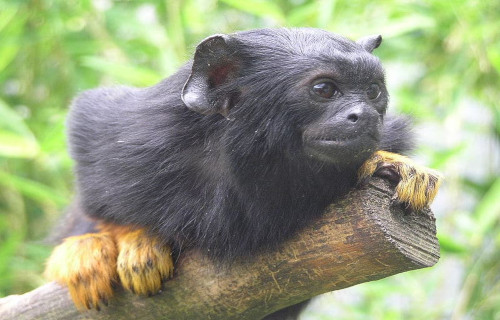
CCL: https://bit.ly/1ryPA8o
Golden-Handed Tamarin Facts
- Placing third among these choices of 7 Lesser-Known South American Mammals is the amazing Golden-Handed Tamarin.
- First of all, the stunning mammal, also known as the Midas Tamarin, remains a truly astonishing species. Of further interest to many, this spellbinding creature also classifies as a variety of New World Monkey. Presently, only five recognized families fall into this highly distinctive category.
- Quite fortunately, its population numbers appear to be sufficient and stable, at least for the moment. This truly pleasant surprise occurs despite its having only a moderate and restricted habitat range. Due to these factors, the IUCN understandably classifies the amazing mammal as a Species of Least Concern.
- Rather interestingly, the remarkable primate also appears to be expanding its territorial range. Unfortunately, however, that new range overlaps into that of another variety of tamarin. Evidence indicates that the Golden-Handed Tamarin is slowly displacing the other species.
Golden-Handed Tamarin Physical Description
The Golden-Handed Tamarin stands out as a rather fascinating creature. But nevertheless, it still remains a physically diminutive primate. That holds true because mature adults only reach an average body length of about 8 – 11 in (20 – 28 cm).
Further, the fairly remarkable tail of the creature adds another 12 – 17 in (31 – 44 cm) to the overall length of the animal. In addition, it also remains a lightweight species, rarely exceeding a weight of 1.2 lb (0.54 kg).
Its dark face also develops virtually hairless, while its large ears protrude from the fur. In addition, the short fur of the mammal displays primarily black or dark brown. The face appears quite dark, and entirely hairless.
However, the feet and hands of the animal remain its most memorable and distinctive physical feature. These usually display a surprising reddish-orange to gold color. This, therefore, serves as the source of the alternate common name of Midas Tamarin.
- Kingdom: Animalia
- Phylum: Chordata
- Class: Mammalia
- Order: Primates
- Family: Callitrichidae
- Genus: Saguinus
- Species: S. midas
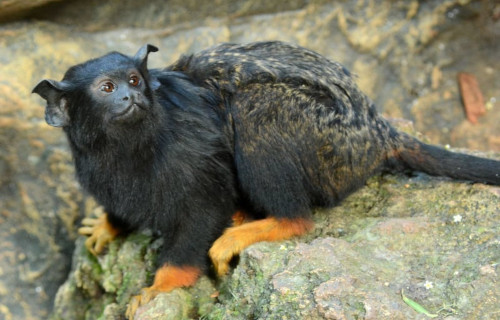
CCL: https://bit.ly/1iowB8m
Golden-Handed Tamarin Distribution, Habitat, and Ecology
First of all, the marvelous Golden-Handed Tamarin inhabits highly specific portions of only 5 countries in South America. This surprisingly limited geographical area includes portions Guyana, Brazil, Suriname, French Guiana, and Venezuela.
Yet even more specifically, within that range, the fascinating primate only inhabits wooded areas north of the Amazon River. The creature also spends virtually all of its time in the canopy of the area. Therein, it also apparently prefers trees with small crowns.
Most notably, however, it typically lives in small groups. These groups usually consist of no more than 4 to 15 individuals. Rather surprisingly, little competition exist within the group, even among breeding males.
But, its impressiveness does not stop there. This species also displays truly extreme durability. Individuals often leap to the group from heights of as much as 60 ft (18 m), managing to land without suffering injury.
Finally, the remarkable animal remains extremely territorial, males and females alike. It can be quite aggressive, and even dangerous, despite its small size. This holds true due to its sharp claws and canine teeth.
Pink Fairy Armadillo

CCL: http://bit.ly/2xQPH8p
Pink Fairy Armadillo Facts
- The next species representing these 7 Lesser-Known South American Mammals is the extraordinary Pink Fairy Armadillo.
- Firstly, the awesome Pink Fairy Armadillo ranks as the smallest of all currently known armadillos. Yet that is not the only claim to fame for this remarkable mammal. Quite unfortunately for Nature lovers, it also remains one of the least well known.
- In addition, the IUCN originally listed the truly remarkable creature as Near Threatened. Due to the regrettable lack of sufficient data, however, that status changed to Data Deficient in the year 2008. Furthermore, ongoing observations may change that yet again.
- Surprisingly to most researchers, this amazing animal has proven quite susceptible to stress. Sadly, this unfortunate susceptibility on the part of the animal continues to hamper conservation efforts. Many such efforts involve relocation of the species or altering its environment.
- Fortunately, though, its natural habitat range includes several areas that now enjoy a protected status. This most notably includes Lihue Calel National Park. It also enjoys protective regulations at both the local and national level. Hopefully, these will aid in its survival. Nevertheless, it also remains vulnerable to climate change, like many other species.
Pink Fairy Armadillo Physical Description
The fabulous Pink Fairy Armadillo remains much smaller than its related species. That’s because a mature adult rarely exceeds 4.5 in (11.5 cm) in length. In addition, an average weight among adults only equals about 4.2 oz (120 g).
Its eyes are also small, and its vision remains relatively poor. Furthermore, the silky fur which covers its body usually displays as a yellowish-white. Yet despite its small size, the animal has comparatively long, powerful claws.
But, its remarkably flexible shell obviously remains its most prominent feature. While coloring varies, it often displays a bright pink hue. Yet its shell develops thinner and more flexible than most related species.
Finally, this truly astonishing species displays no noticeable sign of sexual dimorphism. Therefore, both genders of the species present he same astonishing physical appearance. This trait also holds true for related species, as well.
- Kingdom: Animalia
- Phylum: Chordata
- Class: Mammalia
- Order: Cingulata
- Family: Chlamyphoridae
- Genus: Chlamyphorus
- Species: C. truncatus
Pink Fairy Armadillo Distribution, Habitat, and Ecology
Most notably, the Pink Fairy Armadillo has an extremely limited habitat range. It has only been found in a small portion of central Argentina, in South America. But, even in these locations, it only appears in small scattered pockets of population.
Further, within that range, the magnificent creature has several types of habitat it prefers. These highly varied types include dunes, sandy plains, and grasslands. But outside of these environments the animal does not do well.
It also represents a primarily burrowing, and nocturnal animal. Further, it spends most of its time underground. It also appears to be extremely vulnerable to even small changes in its habitat, requiring great stability.
In addition, the fascinating animal currently remains classified as a generalist insectivore. Most commonly, it feeds on various larvae and ants. However, it will eat leaves, worms, and snails if these cannot be found.
Unfortunately, the species faces a number of threats, not all of them natural. In addition to serving as prey for wild boars, it also falls to domestic dogs and cats. Finally, habitat loss poses an extreme threat, as its already limited range is converted into farmland.
Bald Uakari

CCL: http://bit.ly/2xLZ0ap
Bald Uakari Facts
- Our fifth selection for inclusion in this compendium of 7 Lesser-Known South American Mammals is the incredible Bald Uakari.
- Perhaps the most notable thing about the rather astonishing simian remains its physical appearance. Due to that characteristic alone, it easily ranks as one of the most distinctive simians known to researchers. Yet, more fascinating facts about the animal remain.
- First of all, currently, a total of only four known subspecies of this remarkable animal exist. But sadly, the IUCN presently lists all four of these separate species as Vulnerable. This truly regrettable ranking occurs for reasons varying between the four different species.
- In addition, yet another surprising fact stands out about this remarkable and amazing animal. Quite uniquely, each of the recognized subspecies also coexists within the same highly restricted and specific habitat range. This state of being remains virtually unprecedented.
- Finally, the awesome creature faces several threats to its survival. The principal threats to the existence of this remarkable creature continue to consist of habitat loss and hunting. However, the increasing factor of climate change will likely pose a potential threat in the near future.
Bald Uakari Physical Description
Regardless of its highly distinctive appearance, the Bald Uakari ranks as a rather small species of primate. Firstly, males average a head and body length measuring only 18 in (45.6 cm). Meanwhile, females only average a mere 17.3 in (44 cm). Thus, it exhibits a small degree of sexual dimorphism.
Additionally, maximum weights for both genders of the species also range between 6.1 – 7.6 lb (2.75 – 3.45 kg). Therefore, regardless of its otherwise remarkably impressive nature, the primate ranks as quite light for a simian.
In addition, the coat of this mammal generally displays as long and shaggy. It also usually ranges from white in color to red, and its head develops as bald. Its bright red face actually occurs as a result of the lack of skin pigments and the abundant capillaries that run under its facial tissue.
- Kingdom: Animalia
- Phylum: Chordata
- Class: Mammalia
- Order: Primates
- Family: Pitheciiidae
- Genus: cacajao
- Species: C. calvus
Bald Uakari Distribution, Habitat, and Ecology
Unfortunately, all four subspecies of the impressive Bald Uakari share a dangerous factor. This is a highly restricted and rather specific habitat range. The species only inhabits seasonally flooded forests in the Amazon biome, in Peru and Brazil, in South America.
In addition, the vast majority of individuals inhabit the trees along the sides of rivers. The exact reason for this remains a mystery to researchers, however. Also, individuals spend the majority of their time in its arboreal habitat.
Meanwhile, although technically omnivorous, the fascinating primate primarily consumes a variety of fruits, seeds, and flowers. Therefore, only a mere 5% of its diet consists of meat. This dietary supplement most typically consists of various insects the individual consumes opportunistically.
Finally, the animal also generally travels in small groups, ranging from 5-30 individuals. However, such groups occasionally number as many as 100 animals. Each group travels within and protects its own small territorial range.
Crab Eating Fox
Crab Eating Fox Facts
- The animal placing sixth among our choices of 7 Lesser-Known South American Mammals is the wonderful Crab Eating Fox.
- First of all, the Crab Eating Fox remains a rather fascinating animal. Furthermore, it also ranks as an unusual moderate-sized species of wild canid. It also represents the only known living member of its genus. That fact alone makes the remarkable creature quite unique.
- In fact, the amazing animal possesses attributes of both dogs and foxes. This surprising fact makes it one of the few known species of wild canids to do so. Most of them share attributes of one or the other, not both.
- Fortunately for the truly fascinating species, the fur has no particular value to hunters. However, hunting by humans does still occur within its range. But fortunately, this practice continues to remain rather uncommon.
- Finally, in a move that comes as no great surprise to researchers, the IUCN now officially lists the animal as a Species of Least Concern. This occurs due to a combination of its current numbers and extent of known territory range.
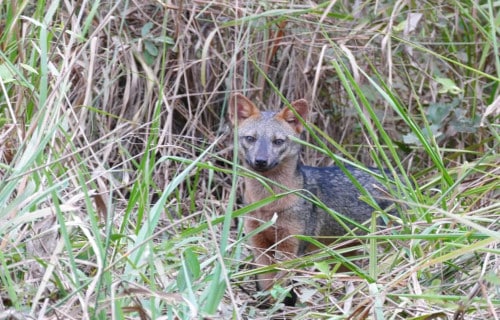
CCL: http://bit.ly/2xLZ0ap
Crab Eating Fox Physical Description
In general body structure, the Crab Eating Fox does not stand out from other related species. That holds true due to the fact that it closely resembles many other foxes. Its distinctiveness originates from other factors than appearance.
Firstly, this amazing but small animal only averages about 25.3 in (64.3 cm) in total body length. This measurement excludes the tail, however. This appendage measures about 11.2 in (28.5 cm) in length. Furthermore, its weight sometimes reaches as much as 17 lb (4.5 kg).
Secondly, the coloring of the fascinating creature remains most commonly a grayish-brown. But it also shows some areas of red on the face and legs. Further, the throat and stomach often present a creamy white. In addition, the fur stays relatively thick and short.
Thirdly, the remarkable species also presents a fairly broad black streak on the back legs. In addition, the ears of this canid develop a decidedly rounded shape. These generally develop set comparatively wide, and often appear tipped with black.
- Kingdom: Animalia
- Phylum: Chordata
- Class: Mammalia
- Order: Carnivora
- Family: Canidae
- Genus: Cerdocyon
- Species: C. thous
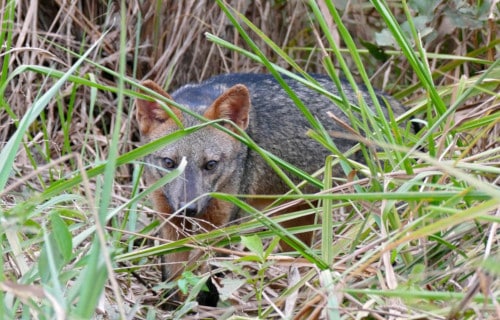
CCL: http://bit.ly/2xLZ0ap
Crab Eating Fox Distribution, Habitat, and Ecology
Perhaps most notably of all, the Crab Eating Fox remains the extent of its range. It evolved as endemic to a moderately extensive area. In fact, that territory range extends from Colombia to Northern Argentina, in South America.
Yet, within that very specific range, the surprisingly impressive mammal inhabits a rather wide variety of habitats. Because of its adaptability, its areas of habitation include woodlands, savannas, and subtropical forests.
The animal often resides in thickets and in areas of plains. Yet, within all these regions, it prefers, when possible, to live near riverbanks. Partly due to this tendency, the species draws its common name from its rather unique diet.
During the wet season, many will hunt for crabs on the floodplains. The species evolved as an opportunistic omnivore. However, it will also consume insects, eggs, fruit, lizards, and even birds. Hunting usually is done in small packs.
Finally, the resourceful carnivore usually place its burrows near bushes or in areas of tall grass. This helps conceal it from its own predators. Most individuals will construct their own if necessary, but prefer to utilize those left by other creatures.
Andean Mountain Cat
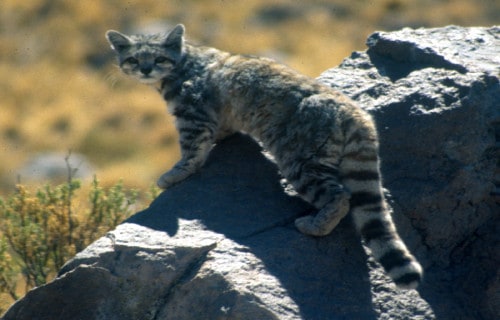
CCL: http://bit.ly/2IjEG4n
Andean Mountain Cat Facts
- The seventh and final species among our selections of 7 Lesser-Known South American Mammals is the marvelous Andean Mountain Cat.
- This wonderful wild feline, also known as the Leopardus jacobita, is a small species of wildcat. This beautiful animal is also one of only two species of wild felines for which no subspecies have been classically described.
- The beautiful small cat remains, unfortunately, an extremely rare creature. Estimates place the number of living individuals to be no more than 2,500. Therefore, few people ever encounter the feline.
- The Leopardus jacobita represents one of approximately two dozen small wildcat species found around the world. Quite unfortunately, the marvelous wild cat also ranks among the least known of all wild felines.
- Sadly, the IUCN currently lists this remarkable feline as Endangered. Like many species around the world, it now finds itself facing severe dangers. The greatest threats to its existence consist of habitat loss and climate change.
Andean Mountain Cat Physical Description
Firstly, the top coat of an Andean Mountain Cat is silvery-grey in color. Commonly the underside is white, with numerous dark spots and stripes. It also possesses black rings around the tail and limbs. Body length also sometimes reaches as much as 25 in (64 cm) and its tail occasionally reaches 19 in. (48 cm).
In addition, the Leopardus jacobita averages about 14 in (36 cm) at the shoulder and weighs about 12 lb. (5.5 kg). Further, the tail develops long, thick and blunt without tapering. The front paws have dark narrow stripes that do not form complete rings. The nose also appears black or very dark in coloration.
There does remain a difference between the color patterns in juvenile and mature Andean Mountain Cats, however. The markings on the coat appear smaller, more numerous, and darker on juveniles. This especially holds true of those on the sides of the body.
- Kingdom: Animalia
- Phylum: Chordata
- Class: Mammalia
- Order: Carnivora
- Family: Felidae
- Genus: Leopardus
- Species: L. jacobita
Andean Mountain Cat Distribution, Habitat, and Ecology
Scientists believe that the Andean Mountain Cat lives only in Bolivia, Chile, Peru, and Argentina, in South America. The felines also prefer high-elevation treeless habitat, where the conditions stay very dry, windy, and cold.
Those areas it prefers to inhabit are also quite often fragmented by the presence of frequent deep valleys. Additionally, its distribution is likely to be further localized by the patchy nature of colonies of the preferred prey.
The Andean Mountain Cat also lives at altitudes of between 11,500-15,700 ft. (3,500-4,800 m) in elevation. Though it is about the size of a domestic cat, it appears larger. This occurs because of the long tail and thick fur of the cat.
Unfortunately, estimates indicate the amazing wildcat’s numbers to be in a rapid decline. This occurs primarily due to a loss of habitat. Further, this often happens due to mining, the creation of cattle lands, etc. It also involves a decline in the numbers of its prey.
Its diet consists primarily of the mountain viscacha, which is a type of rodent. The feline will also hunt mountain chinchillas which are also in rapid decline due to hunting for the fur trade. Also, people in Chile and Bolivia often kill them because of local superstitions.
Finally, since the creature lives only in the high rocky mountains, human-inhabited valleys act as barriers. This fragments the population even further, meaning that even low levels of poaching could be devastating.
7 Lesser-Known South American Mammals

CCL: http://bit.ly/2xLZ0ap
We truly hope that you greatly enjoyed this article about 7 lesser-Known South American Mammals. These fascinating and remarkable creatures never fail to astound us. But, these represent only the tiniest fraction of species to amaze you, found throughout our world. But, many of them find themselves in peril. It remains up to us to do all that we can to protect and preserve them, for their sake, as well as our own.
Check out our other articles on Sensational Christmas Namesakes of the World, Earth’s Many Mesmerizing Cephalopods, Wonderful Wild Cats of the World, 7 Wondrous Wasps Worldwide, Earth’s Many Astounding Beetles
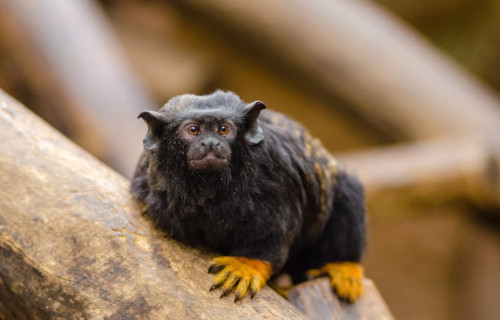
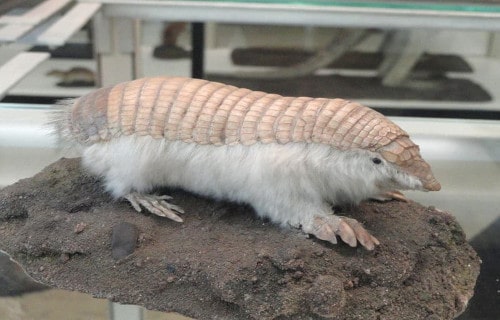
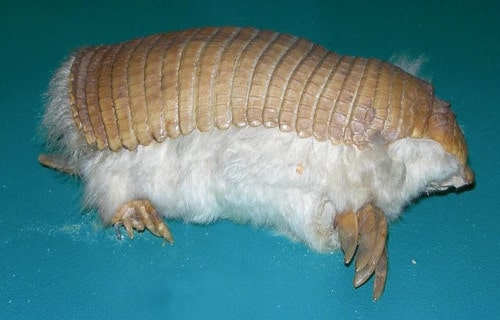
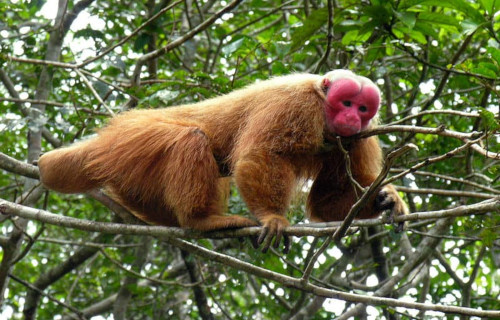
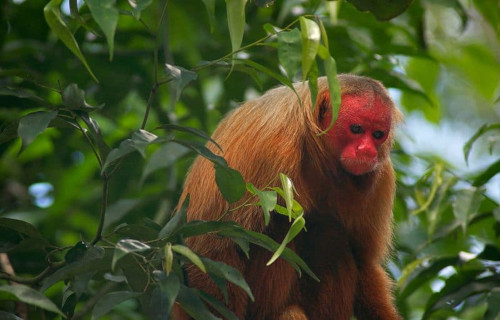
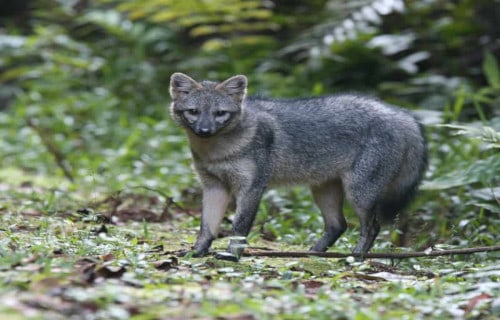
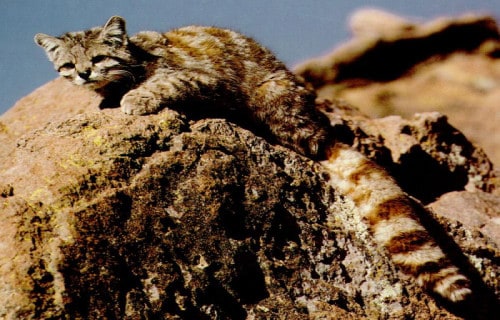










Leave a Reply